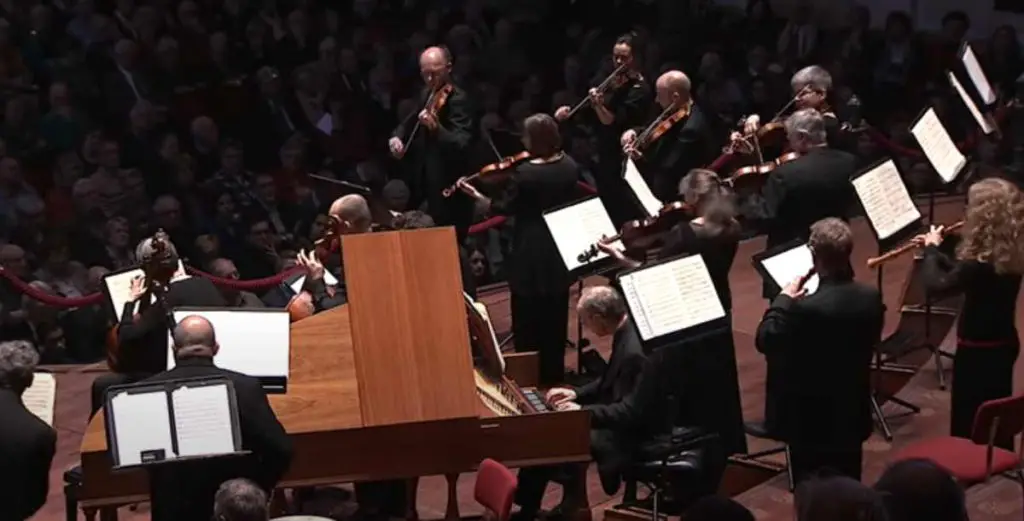The German-Japanese violin player Midori Seiler and Akademie für Alte Musik Berlin perform Antonio Vivaldi’s “Four Seasons” (Italian: Le quattro stagioni). A choreographed interpretation conducted by Clemens-Maria Nuszbaumer and directed by Juan Kruz Díaz Esnaola. Broadcast by ARTE HD.
Programme (with starting times)
- Concerto No. 1 in E major, Op. 8, RV 269, “La primavera” (Spring) 00:00
- Allegro
- Largo e pianissimo sempre
- Allegro pastorale
- Concerto No. 2 in G minor, Op. 8, RV 315, “L’estate” (Summer) 10:48
- Allegro non molto
- Adagio e piano – Presto e forte
- Presto
- Concerto No. 3 in F major, Op. 8, RV 293, “L’autunno” (Autumn) 21:33
- Allegro
- Adagio molto
- Allegro
- Concerto No. 4 in F minor, Op. 8, RV 297, “L’inverno” (Winter) 33:28
- Allegro non molto
- Largo
- Allegro
Vivaldi’s Four Seasons
Antonio Vivaldi’s “The Four Seasons” (“Le quattro stagioni” in Italian) is a set of four violin concertos that is perhaps one of the most famous and frequently performed pieces in the classical music repertoire. Composed in 1723, the concertos were part of a larger work titled “Il cimento dell’armonia e dell’inventione” (The Contest Between Harmony and Invention). Each concerto corresponds to a different season-Spring, Summer, Autumn, and Winter-and is composed of three movements, following the fast-slow-fast pattern typical of the Baroque concerto form.
Notably, Vivaldi paired each concerto with a sonnet, possibly written by himself, that describes the scenes the music aims to evoke. This makes “The Four Seasons” one of the earliest and most detailed examples of programmatic music, where the composition is designed to tell a specific story or depict a particular idea, landscape, or emotion.
Musical Structure and Techniques
In each concerto of the Four Seasons, Vivaldi employs various techniques to musically represent the characteristics and atmospheres of each season.
- Spring: The concerto begins with a lively movement that evokes the feeling of renewal and rebirth. You can almost hear flowers blooming and birds singing in the high-pitched, rapid violin phrases. The second movement is more subdued and pastoral, featuring a melody that could represent a goatherd resting, complete with a drone that mimics a bagpipe.
- Summer: This concerto is characterized by its oppressive heat. The opening is languid, expressing the heaviness of a hot afternoon. However, it’s also punctuated with moments of sudden activity, possibly portraying summer storms.
- Autumn: This concerto opens with the joyous mood of a harvest celebration, complete with dance rhythms. The second movement is more mellow, reflecting perhaps the gradual slowing down of activity as winter approaches.
- Winter: This final concerto captures the icy chill of winter with biting, staccato notes, and the use of extended techniques like spiccato (bouncing the bow on the strings). The slow movement has a peaceful, almost melancholic mood, while the last movement is lively, perhaps representing the enjoyment of winter sports.
Historical and Cultural Impact
“The Four Seasons” was groundbreaking for its time and has remained popular for nearly 300 years. It is often seen as a pinnacle of the Baroque era’s interest in contrast, expression, and virtuosity. Vivaldi’s work was revolutionary in the way it approached the violin as not just a musical instrument but as a tool for storytelling and emotional expression.
In modern times, “The Four Seasons” has permeated popular culture and has been featured in various movies, commercials, and other media. Its accessibility and vivid musical imagery make it an excellent entry point for people new to classical music, but its technical demands and emotional depth also make it a rewarding study for seasoned musicians and scholars.
Over the years, numerous violinists have recorded “The Four Seasons,” each offering a unique interpretation. The piece is often performed both on period instruments, aiming to capture the sound that Vivaldi himself would have been familiar with, and modern instruments that give the work a different tonal quality.
The Four Seasons (Italian: Le quattro stagioni) is a set of four violin concertos by Antonio Vivaldi. Composed around 1720, The Four Seasons is Vivaldi’s best-known work and is among the most popular pieces in the Baroque music repertoire.
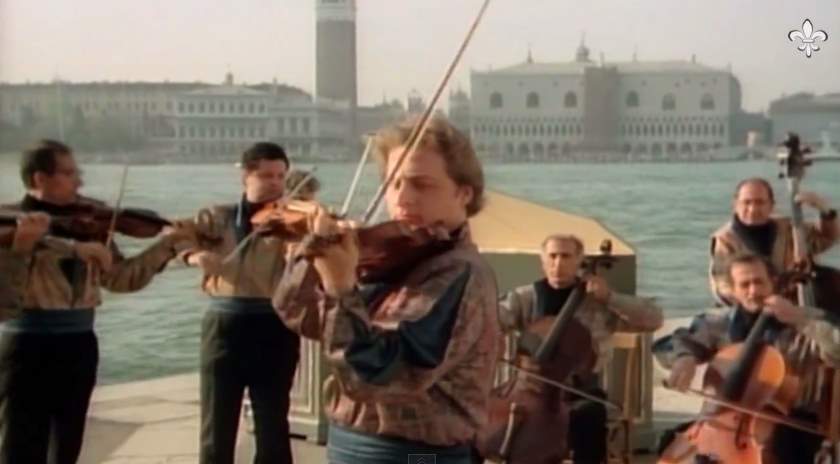
Related: Vivaldi – Four Seasons [I Musici]
Poems of the Four Seasons
Unusually for the time, Antonio Vivaldi published the concerti “Four Seasons” with accompanying poems (possibly written by Vivaldi himself).
Spring “La primavera”
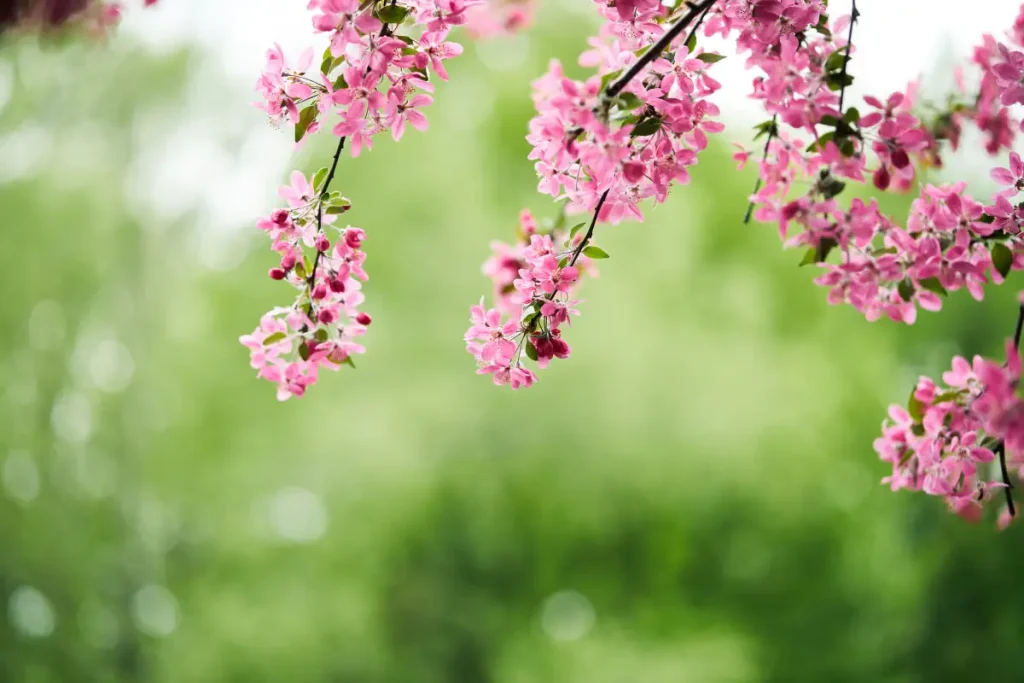
1st movement: Allegro
Giunt’ è la Primavera e festosetti
La Salutan gl’ Augei con lieto canto,
E i fonti allo Spirar de’ Zeffiretti
Con dolce mormorio Scorrono intanto:
Vengon’ coprendo l’ aer di nero amanto
E Lampi, e tuoni ad annuntiarla eletti
Indi tacendo questi, gl’ Augelletti;
Tornan’ di nuovo al lor canoro incanto.
Springtime is upon us.
The birds celebrate her return with festive song,
and murmuring streams are softly caressed by the breezes.
Thunderstorms, those heralds of Spring, roar, casting their dark mantle over heaven,
Then they die away to silence, and the birds take up their charming songs once more.
2nd movement: Largo e pianissimo sempre
E quindi sul fiorito ameno prato
Al caro mormorio di fronde e piante
Dorme ‘l Caprar col fido can’ à lato.
On the flower-strewn meadow, with leafy branches rustling overhead, the goat-herd sleeps, his faithful dog beside him.
3rd movement: Allegro pastorale
Di pastoral Zampogna al suon festante
Danzan Ninfe e Pastor nel tetto amato
Di primavera all’ apparir brillante.
Led by the festive sound of rustic bagpipes, nymphs, and shepherds lightly dance beneath the brilliant canopy of spring.
Summer “L’estate”
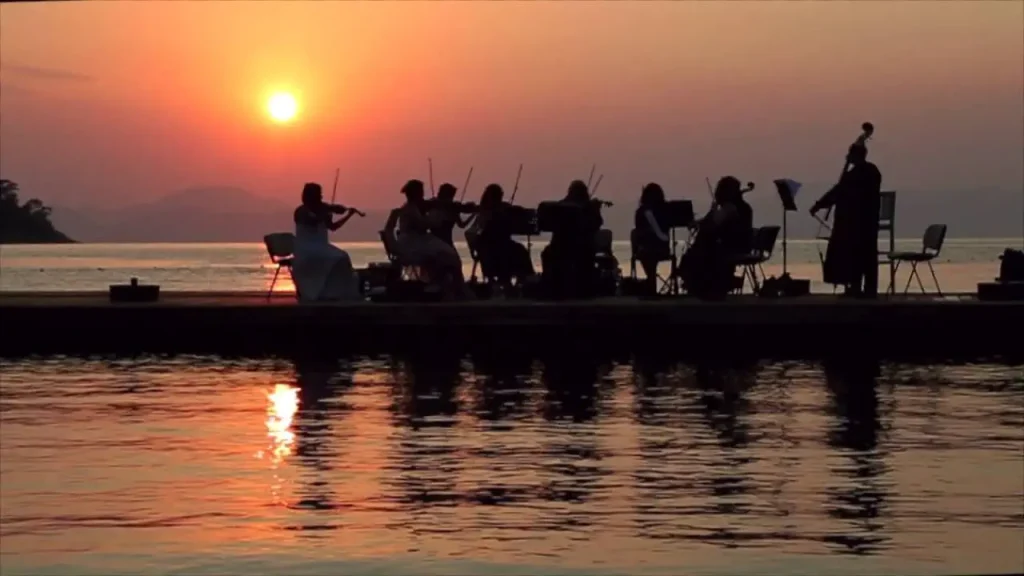
1st movement: Allegro non molto
Sotto dura Staggion dal Sole accesa
Langue l’ huom, langue ‘l gregge, ed arde il Pino;
Scioglie il Cucco la Voce, e tosto intesa
Canta la Tortorella e ‘l gardelino.
Zeffiro dolce Spira, mà contesa
Muove Borea improviso al Suo vicino;
E piange il Pastorel, perche sospesa
Teme fiera borasca, e ‘l suo destino;
Beneath the blazing sun’s relentless heat
men and flocks are sweltering,
pines are scorched.
We hear the cuckoo’s voice; then sweet songs of the turtle dove and finch are heard.
Soft breezes stir the air….but threatening north wind sweeps them suddenly aside. The shepherd trembles, fearful of violent storm and what may lie ahead.
2nd movement: Adagio e piano – Presto e forte
Toglie alle membra lasse il Suo riposo
Il timore de’ Lampi, e tuoni fieri
E de mosche, e mossoni il Stuol furioso!
His limbs are now awakened from their repose by fear of lightning’s flash and thunder’s roar, as gnats and flies buzz furiously around.
3rd movement: Presto
Ah che pur troppo i Suo timor Son veri
Tuona e fulmina il Ciel e grandioso
Tronca il capo alle Spiche e a’ grani alteri.
Alas, his worst fears were justified, as the heavens roar and great hailstones beat down upon the proudly standing corn.
Autumn
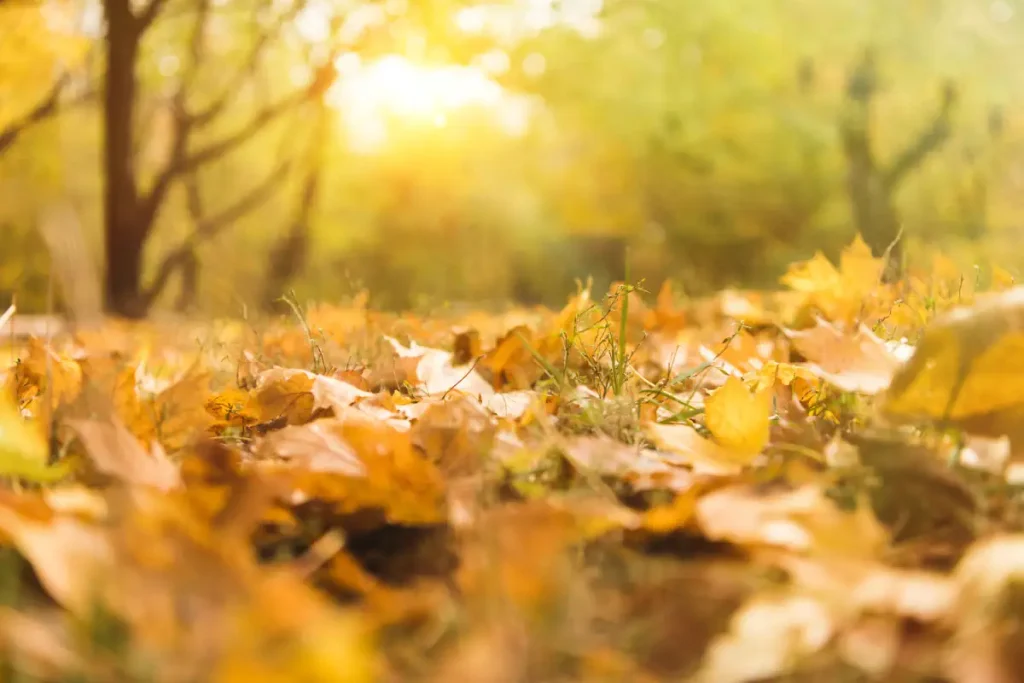
1st movement: Allegro
Celebra il Vilanel con balli e Canti
Del felice raccolto il bel piacere
E del liquor de Bacco accesi tanti
Finiscono col Sonno il lor godere
The peasant celebrates with song and dance the harvest safely gathered in.
The cup of Bacchus flows freely, and many find their relief in deep slumber.
2nd movement: Adagio molto
Fà ch’ ogn’ uno tralasci e balli e canti
L’ aria che temperata dà piacere,
E la Staggion ch’ invita tanti e tanti
D’ un dolcissimo Sonno al bel godere.
The singing and the dancing die away
as cooling breezes fan the pleasant air,
inviting all to sleep
without a care.
3rd movement: Allegro
I cacciator alla nov’ alba à caccia
Con corni, Schioppi, e canni escono fuore
Fugge la belua, e Seguono la traccia;
Già Sbigottita, e lassa al gran rumore
De’ Schioppi e canni, ferita minaccia
Languida di fuggir, mà oppressa muore.
The hunters emerge at dawn,
ready for the chase,
with horns and dogs and cries.
Their quarry flees while they give chase.
Terrified and wounded, the prey struggles on,
but, harried, dies.
Winter
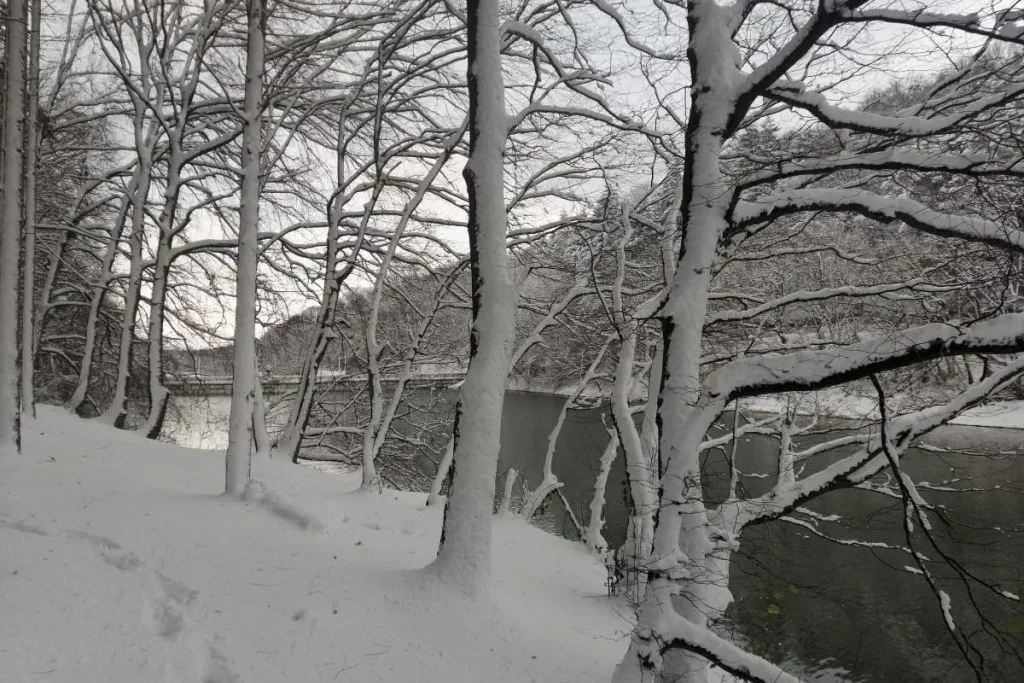
1st movement: Allegro non molto
Aggiacciato tremar trà neri algenti
Al Severo Spirar d’orrido Vento,
Correr battendo i piedi ogni momento;
E pel Soverchio gel batter i denti.
Shivering, frozen mid the frosty snow in biting, stinging winds;
running to and fro to stamp one’s icy feet, teeth chattering in the bitter chill.
2nd movement: Largo
Passar al foco i di quieti e contenti
Mentre la pioggia fuor bagna ben cento
To rest contentedly beside the hearth, while those outside are drenched by pouring rain.
3rd movement: Allegro
Caminar Sopra ‘l giaccio, e à passo lento
Per timor di cader gersene intenti;
Gir forte Sdruzziolar, cader à terra
Di nuove ir Sopra ‘l giaccio e correr forte
Sin ch’ il giaccio si rompe, e si disserra;
Sentir uscir dalle ferrate porte
Sirocco Borea, e tutti i Venti in guerra
Quest’ é ‘l verno, mà tal, che gioja apporte.
We tread the icy path slowly and cautiously, for fear of tripping and falling.
Then turn abruptly, slip, crash on the ground and, rising, hasten on across the ice lest it cracks up.
We feel the chill north winds coarse through the home despite the locked and bolted doors…
Midori Seiler
The German-Japanese violin player, Midori Seiler, is the daughter of a Japanese pianist mother and a Bavarian pianist father, who grew up in Salzburg, Austria. Her musical training took her from Salzburg to Basel, London, and Berlin. Her teachers were Helmut Zehetmair, Sandor Végh, Adelina Oprean, David Takeno, Eberhard Feltz and Stephan Mai.
Since 2000, Midori Seiler is concertmistress of the orchestras Akademie für Alte Musik Berlin and Anima Eterna and was invited as guest concertmaster at various groups, such as Orchestra of the Age of Enlightenment and Deutsche Kammerphilharmonie Bremen. As a soloist in Europe, South America, Asia, and the USA, she performed violin concerti by J.S. Bach, Georg Philipp Telemann, Haydn, Felix Mendelssohn, Mozart, and Beethoven.
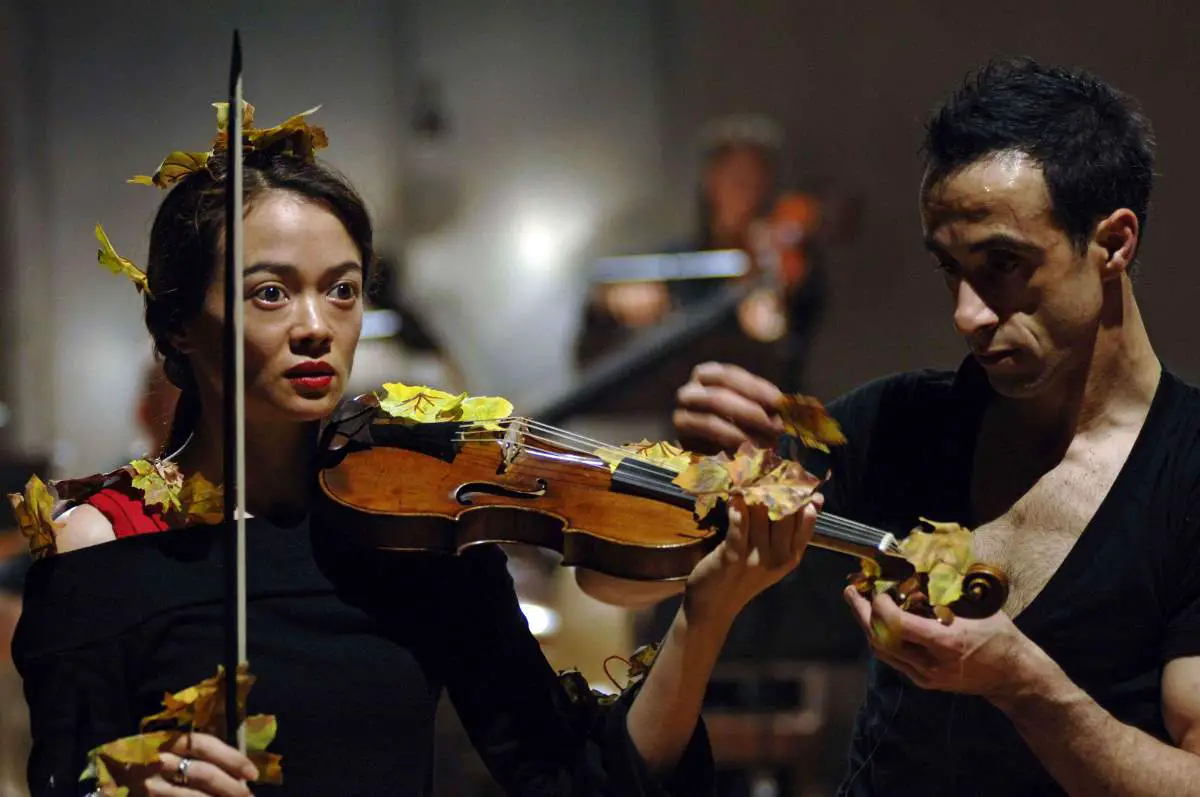
Since 2010, Seiler has served as professor of Baroque violin and viola at the Liszt School of Music in Weimar. Among her most important recordings is the highly acclaimed 2011 Berlin Classics CD of the Bach Partitas for violin solo, No. 1, No. 2, and No. 3.
Akademie für Alte Musik Berlin
Akademie für Alte Musik Berlin (Academy for Ancient Music Berlin, short name: Akamus) is a German chamber orchestra founded in East Berlin in 1982. Each year Akamus gives circa 100 concerts, ranging from small chamber works to large-scale symphonic pieces in Europe’s musical centers as well as on tours in Asia, North America, and South America.
About 30 musicians form the core of the orchestra. They perform under the leadership of their four concertmasters Midori Seiler, Stephan Mai, Bernhard Forck, and Georg Kallweit, or guest conductors like René Jacobs, Marcus Creed, Daniel Reuss, Peter Dijkstra, and Hans-Christoph Rademann.
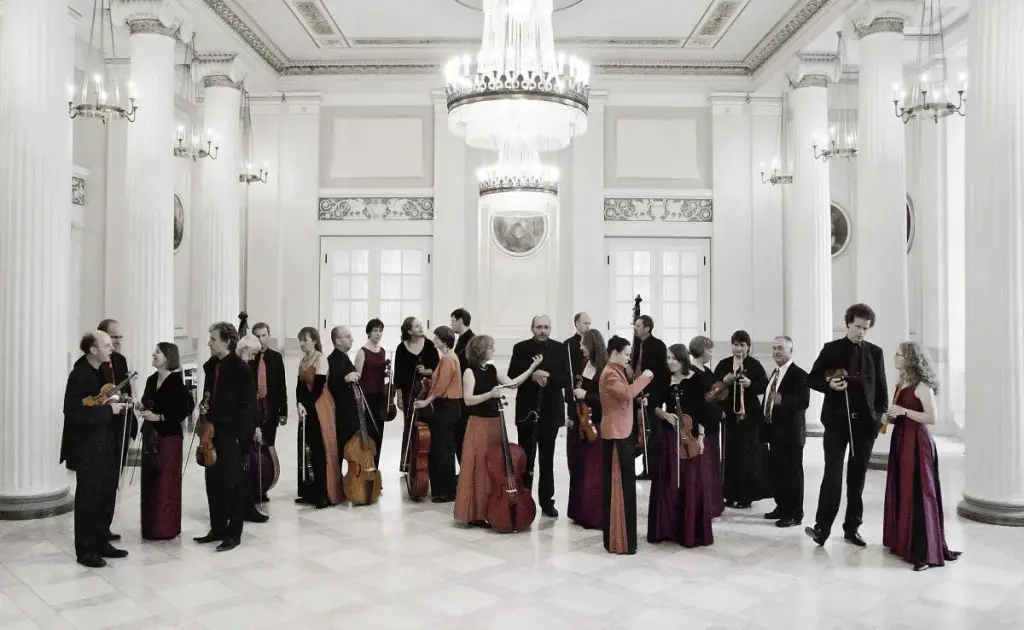
Recording exclusively for Harmonia Mundi France since 1994, the ensemble’s CDs have earned many international prizes, including the Grammy Award, the Diapason d’Or, the Cannes Classical Award, the Gramophone Award, and the Edison Award. In 2011 the recording of Mozart’s Magic Flute was honoured with the German Record Critics’ Award. In 2006 the Recorder Concertos by G. Ph. Telemann with Maurice Steger (CD HMF) received a number of the most important international awards.
Ever since the reopening of the Berlin Konzerthaus in 1984, the ensemble has had its own concert series in Germany’s capital. Furthermore, it has regularly been a guest at the Berlin Staatsoper Unter den Linden, Philharmonie Berlin, De Nederlandse Opera in Amsterdam, the Innsbruck Festival of Early Music, and the Carnegie Hall New York.
The ensemble works regularly with the RIAS Kammerchor as well as with soloists like Cecilia Bartoli, Andreas Scholl, Sandrine Piau, and Bejun Mehta. Moreover, Akamus has extended its artistic boundaries to work together with the modern dance company Sasha Waltz & Guests for productions of Dido and Aeneas (music: Henry Purcell) and Medea (music: Pascal Dusapin).
Sources
- Vivaldi’s Four Seasons on Wikipedia
- Midori Seiler on Bach-Cantatas.com
- Midori Seiler on allmusic.com
- Akademie für Alte Musik Berlin on Wikipedia
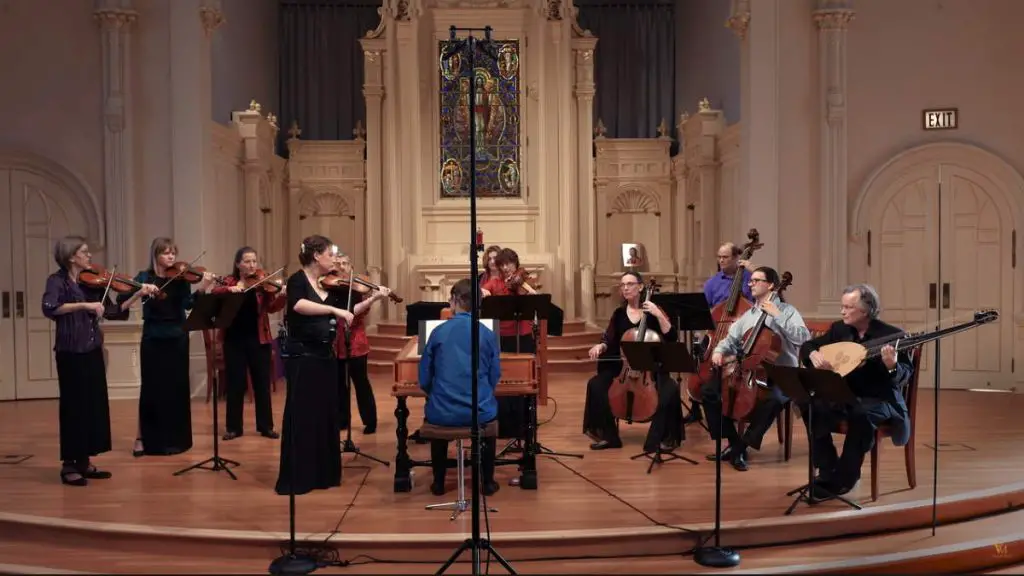
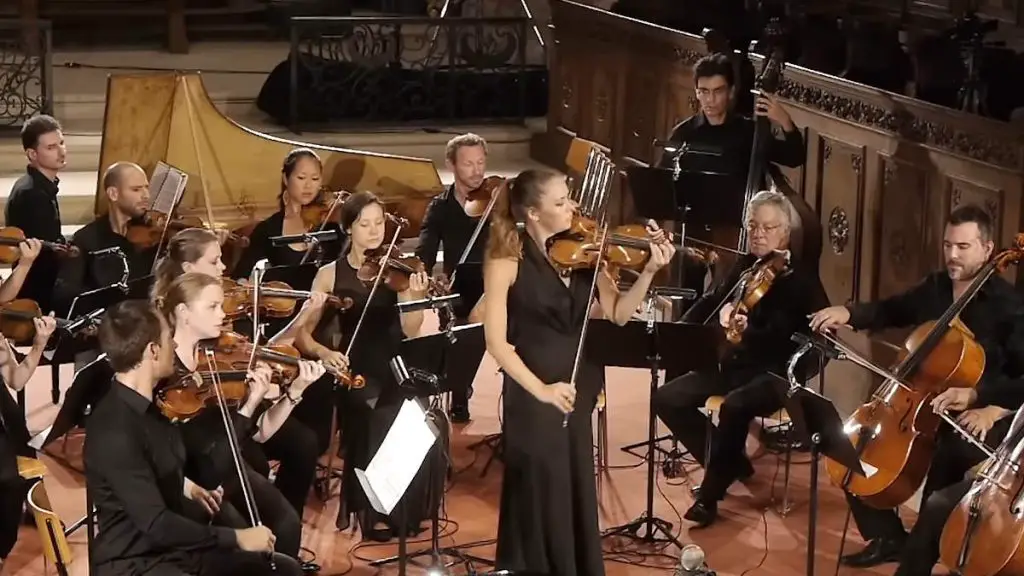
![Vivaldi: Four Seasons [Julia Fischer]](https://cdn-0.andantemoderato.com/wp-content/uploads/2015/09/Vivaldi-Four-Seasons-Julia-Fischer-1024x576.jpg)
